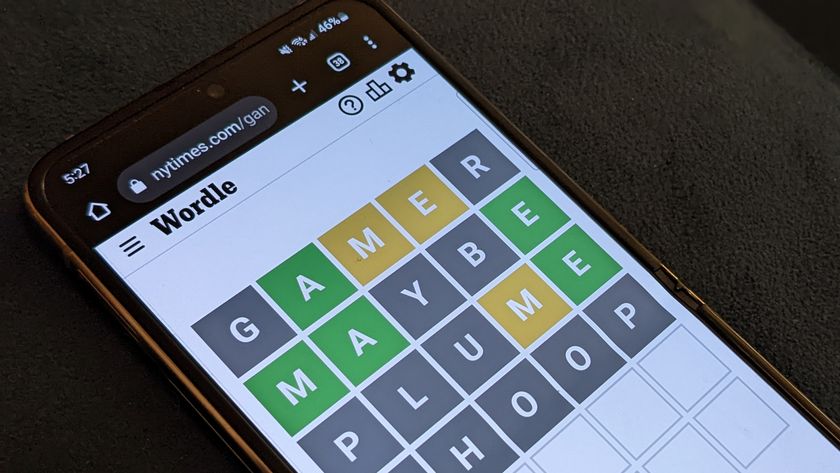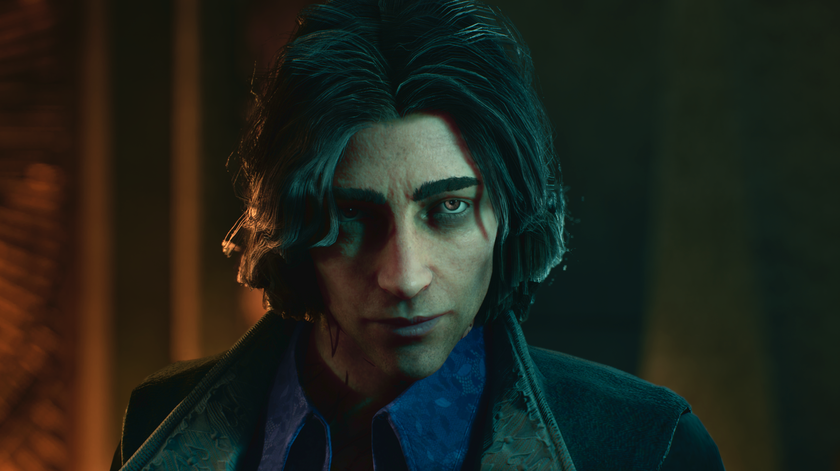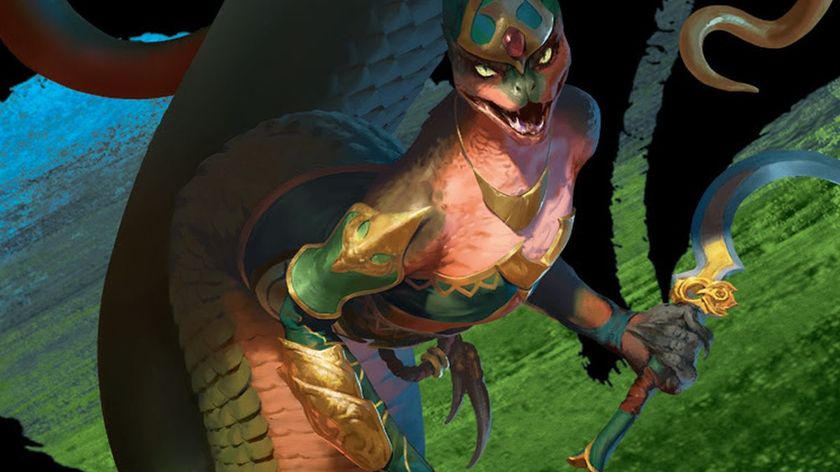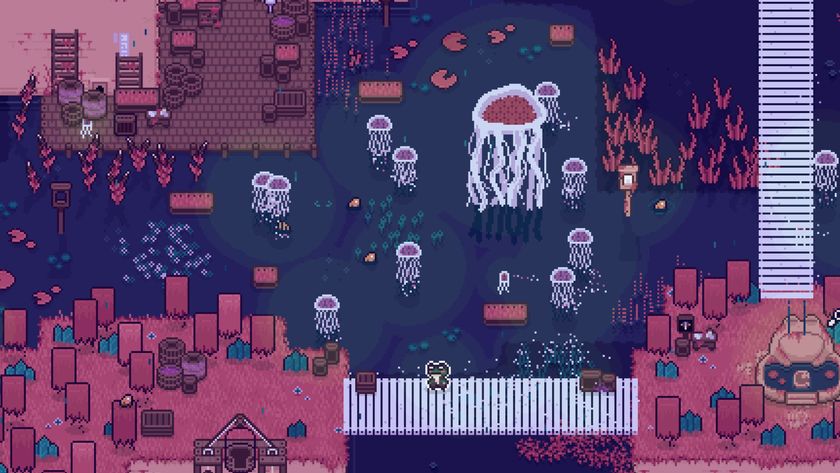What does it take to build a League of Legends champion?
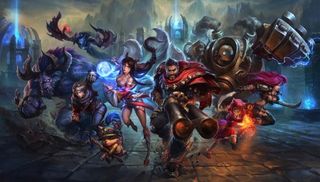
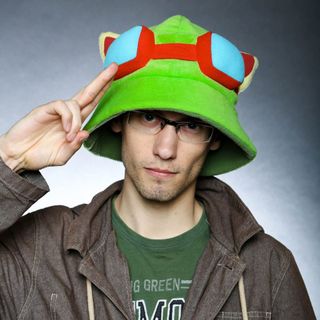
August Browning joined Riot Games in late 2012, immediately after finishing college. As one of the youngest employees at Riot's California office, he has already had a hand in designing four major League of Legends champions: Vi, Jinx, Ekko and Gnar.
Browning recently visited Sydney for the League of Legends OPL finals at Luna Park. I caught up at Riot's local office to find out what it's like to build characters for the world's most popular video game, and to see if I could dredge up any secrets about the ones Browning helped develop.
PC Gamer: Where do you fit in the process of champion design?
August Browning: I’m a mechanics designer. I determine all the spells on the kits, make them, and then tune them in-game. Then, on top of that, I’m working really closely with the writer and the concept artist. We give each other constant feedback about how [the champions] feel in-game, how they look compared to how they feel, and we work together to make the most cohesive character possible. Then once we have the character we want, we put it into production. It's very much a team effort between concept artists, writers, production artists and animators.
PCG: League of Legends has a unique aesthetic and art style. How would you define it to an outsider?
AB: I actually think it’s a little eclectic, just in terms of the wide range of themes and things you can see: you have a crazy girl in a city of technology who runs around with Hextech weaponry blowing up buildings, then you have a knight in shining armor with a giant sword who can summon a magical, bigger sword from the sky to wreck his enemies. It’s definitely eclectic.
A lot of the characters we really like, that feel truly League of Legends, are the ones where you take a common trope, or something that’s exciting, and then you blow it up to 11. A really jokey answer is Master Yi and his sword boots—this is a samurai who doesn’t just have a giant oversized sword, but also swords on his boots. Vi is a more modern version of that: what if we made a pugilist? What do we do to amplify that? Give her giant hex-tech gauntlets, of course. The base fantasy is a person who punches you, while the League of Legends fantasy is: giant gauntlets that wreck you. Taking these basic themes and taking them to 11 and making them go crazy is the League of Legends way.
The biggest gaming news, reviews and hardware deals
Keep up to date with the most important stories and the best deals, as picked by the PC Gamer team.
PCG: Is that mandated? When you come on board as a designer does someone explain the aesthetic? How flexible is it?
AB: I would say nothing is really mandated. We don’t have someone who says “this must be this way, or else”. In design you don’t just flat out say “no” to something, but instead “here are the problems with this, how do we solve it, and can it be better”. in terms of champion design, both from a thematic point of view where artists are drawing concepts and a mechanical standpoint where we’re coming up with crazy kit ideas—there’s never a point where we say it must be this way.
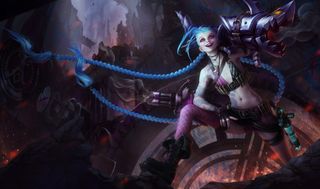
We do, at the same time, want to maintain some coherence. When we were making Jinx for example, originally her guns were much more modern, much more sci-fi. We were like “well, League of Legends could have guns in it, that’s not necessarily wrong, but in our game the guns are more Hextech, they’re more magical in nature". So if you look at Fishbones (Jinx's basic attack) she never actually puts rockets in her rocket launcher. They’re not just physical rockets, they’re magical in nature.
PCG: Could you feasibly take any sci-fi trope and say “yeah, but magic”?
AB: It’s not that easy, to be fair. It needs to fit, it needs to make sense. We don’t want to put in a hardcore space marine, but you might take the base idea of a space marine — a guy with a repeater gun and giant armor—then extract that and say, maybe the gun is Hextech, and maybe the armor is more pared down. We do feel, overall, that it’s pretty open. We want to make it feel like part of the world, and there are a lot of ways to solve those problems.
PCG: League of Legends has a massive roster, with more than 120 champions currently playable. Do you need intimate knowledge of each champion to make a new one?
AB: Most certainly. The really important part about having an intimate knowledge of champions, is that when you’re making a new one you’re not stepping on anyone’s toes and taking what’s special about them, because that can get really nasty.
A dumb example: we have Vi in the game. If we were to make a blue-haired Vi, and blue-haired Vi was just Vi, but more powerful, people who play and really like Vi are going to be upset. Some might be excited, but others would be like, “but I like my old Vi, why are you taking that away from me”. It’s really important to understand what’s important about all the other champions your character will compete with, and to make sure your new character occupies something new rather than something already done.
PCG: It’s one thing to design the characters, but another to see them implemented. What’s the process with balancing? It must be a massive undertaking.
AB: It is. Balancing new characters, especially when we’re trying to make them new and different, is really hard. The crazier the champion is—the more different it is—the less baselines we have to go off. Again, going back to blue-haired Vi, if I made her I could just look at Vi’s numbers and get pretty close to a balance. But when you’re making something new and crazy, you’ve got to think “what does it mean to roam the map as Bard, and what part of his power budget is encompassed by roaming the map”. We’re constantly trying to look at that.
One of the big things is that we understand we’re not going to get a champion perfectly balanced when we release them, but we can be very responsive when they come out. One of the big things we do ask after playtests—because we want to get champions close to balance—is was this character succeeding in a way that they shouldn’t have, or losing in a way they shouldn’t have? Then we can buff up or nerf those parts accordingly.
An easy example is Jinx: one of her weaknesses should be that once you get on her you can kill her, because she’s not very mobile. Just say I put Jinx into a test environment with 30 more movement speed and she just walks away from melee characters... that's not appropriate. We adjust based on those goals.
PCG: How long does it take to determine whether a champion is as balanced as it can be before going public?
AB: We usually start balancing a champion up to a month or two before release. To be fair, we balance all the way through the process, because it’s hard to playtest a character when they’re doing 5,000 true damage on every basic attack. We really start drilling down at about the one to two month mark before they come out.
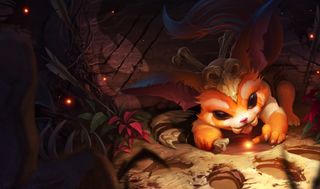
PCG: The way champions function on the battlefield is the most important thing, but to what extent does character background and wider LoL lore play into their design?
AB: First of all it depends on the champion. Some are built with no lore in mind: Orianna is a character who the designer said “I want to make a character about a girl with a ball”. It’s not lore focused but mechanics focused. Then, after that, we found a concept to put on that character. Myself, I prefer to start with stuff like lore, but it’s not necessarily background info but more the overall theme. Jinx is a manic criminal, for example. The reason I start there is because I want champions to feel a certain way.
When I was working on Jinx one of the constant questions I was asking myself was “does she feel crazy? Does she feel manic? Does she feel excited?” For a long time she actually didn’t and I was really worried, because I wanted to deliver those feelings. Then one day one of our QA analysts suggested “hey, what if she ran really fast whenever she killed someone, so fast that she lost control?” I said, “Blake, that’s crazy” and he said, “yeah, that’s the point.”
PCG: Is the difficulty level of a character determined at the beginning, or does it emerge organically?
AB: Honestly, nowadays we’re thinking about that more. If you look over the last year we’ve released a lot of mechanically intense champions: Kalista, Rek'Sai, Azir, Gnar, and even Ekko to a degree. Not everyone can be an Azir, but that’s not saying we shouldn’t make champions like that, but we also want to deliver characters who are more suited to a Janna, or Vi, or Garen. Sometimes we want to make simpler characters. It’s not about a character being braindead or easier to play, but we want characters with lower skill floors but at the same time with medium to high skill series.
Vayne is good for that: she’s easy to pick up but the mastery curve is pretty intense. Sometimes we do want Azirs, because he’s really hard to pick up but once you do, you’re really rewarded. That said, another way we used to think about it and sometimes still do, are skill levels that speak to the theme of the character. If you look at Yasuo, he’s one of our most complex characters and he’s meant to be: it’s hard to be a samurai. Part of being a samurai is a skill fantasy: the precision, the blade. That felt like a good fit for the complex kit he ended up getting, whereas a character like Vi, she wants to be really straightforward because she just wants to get in your face and punch you. When I was making Vi I wanted to keep her kit a bit more straightforward because that’s what the character’s theme spoke to.
On the next page: a closer look at Gnar.

Shaun Prescott is the Australian editor of PC Gamer. With over ten years experience covering the games industry, his work has appeared on GamesRadar+, TechRadar, The Guardian, PLAY Magazine, the Sydney Morning Herald, and more. Specific interests include indie games, obscure Metroidvanias, speedrunning, experimental games and FPSs. He thinks Lulu by Metallica and Lou Reed is an all-time classic that will receive its due critical reappraisal one day.
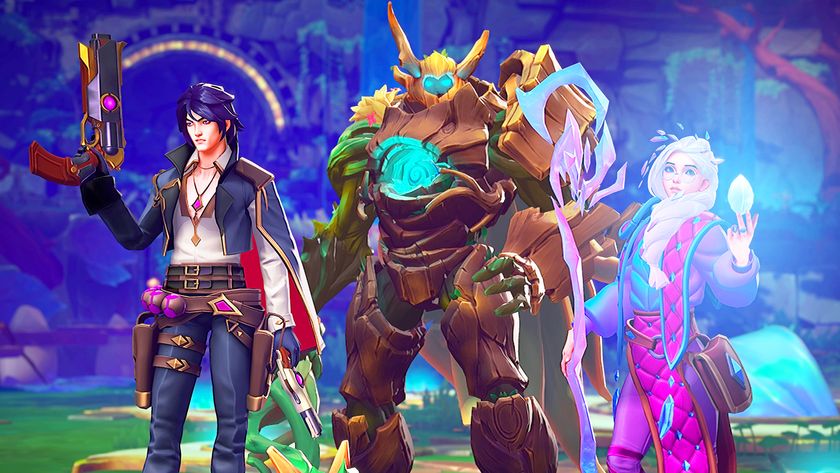
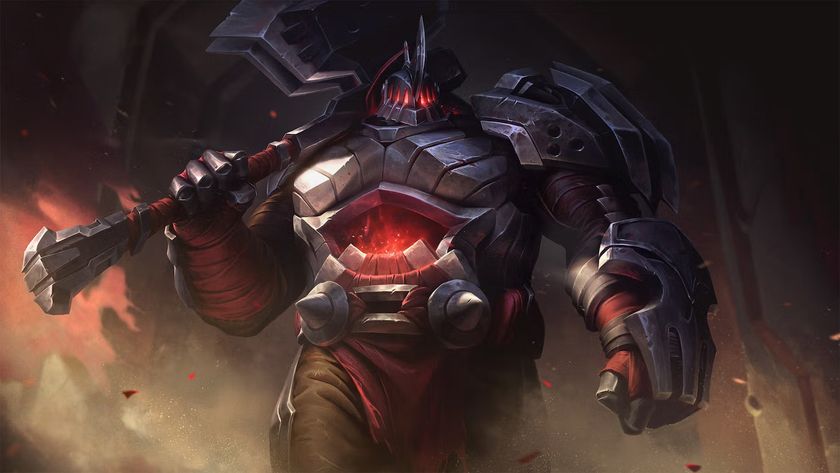
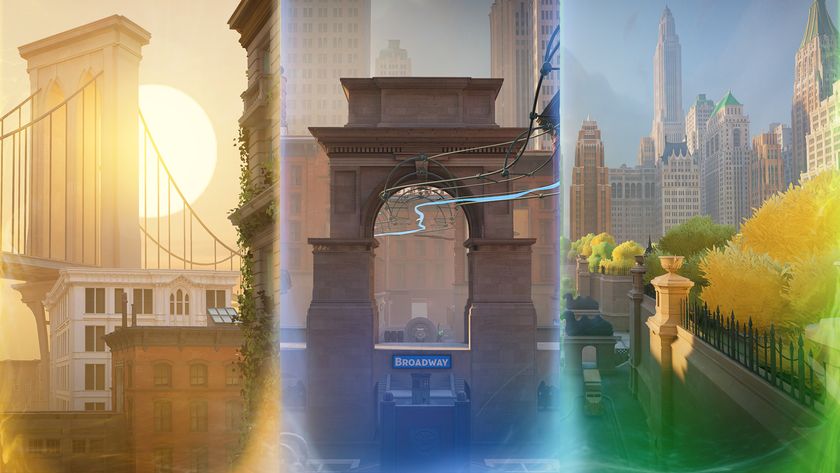

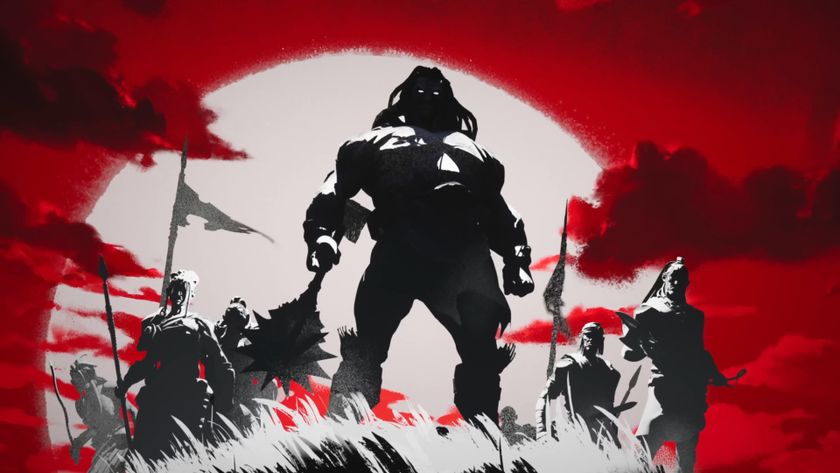

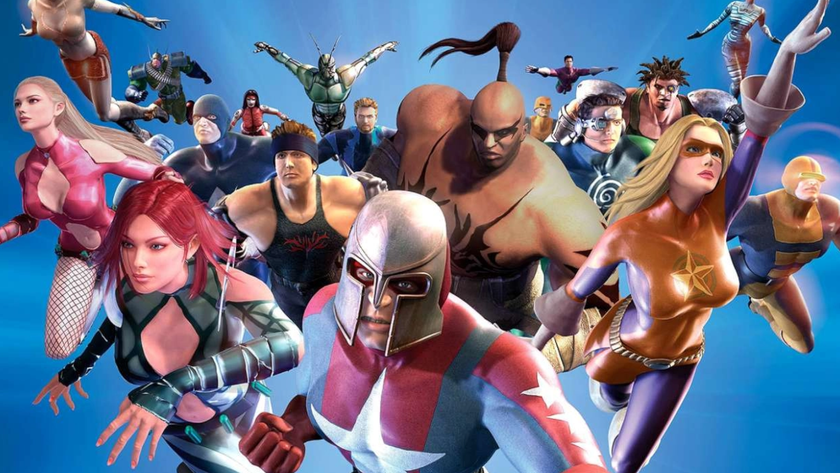
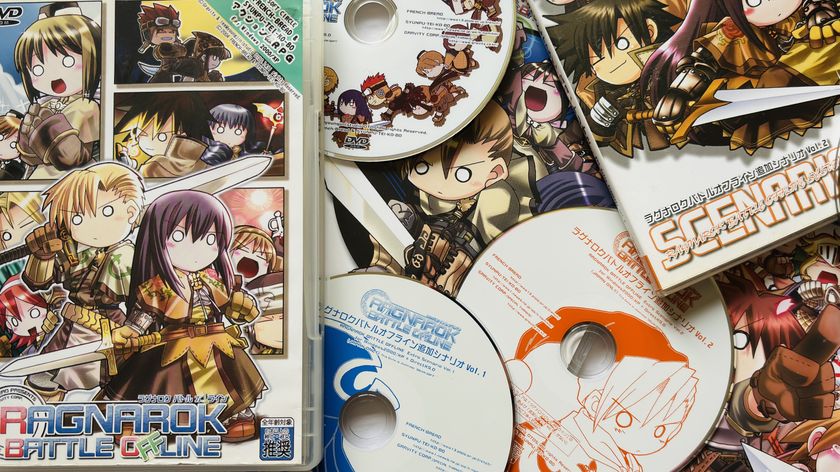
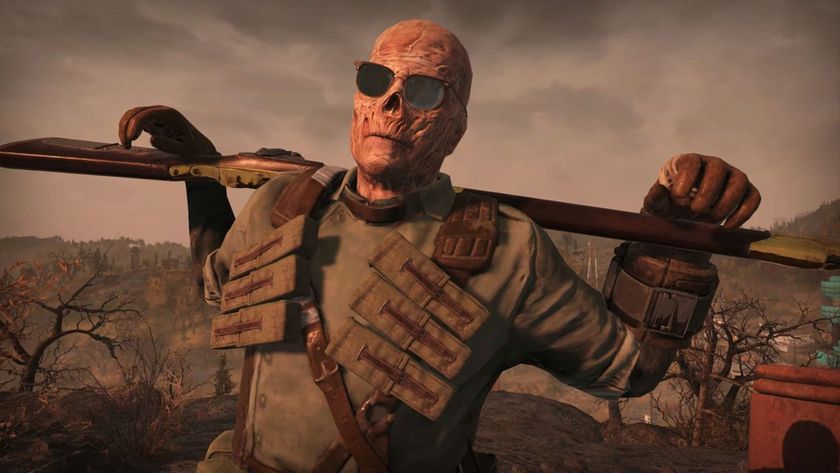
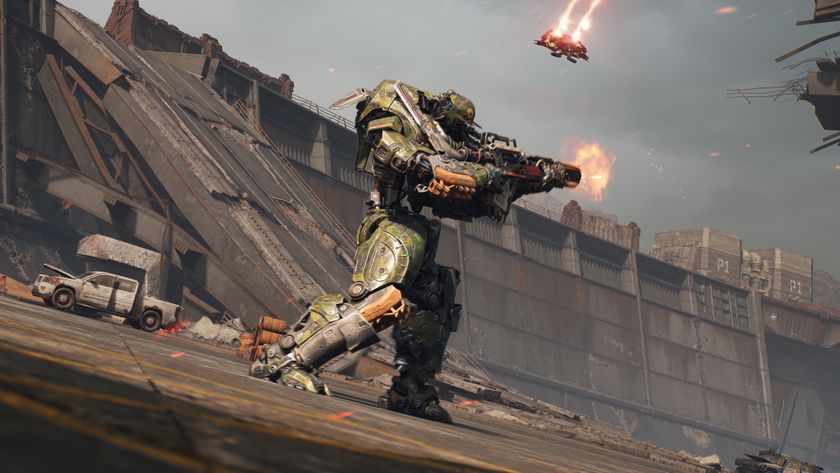
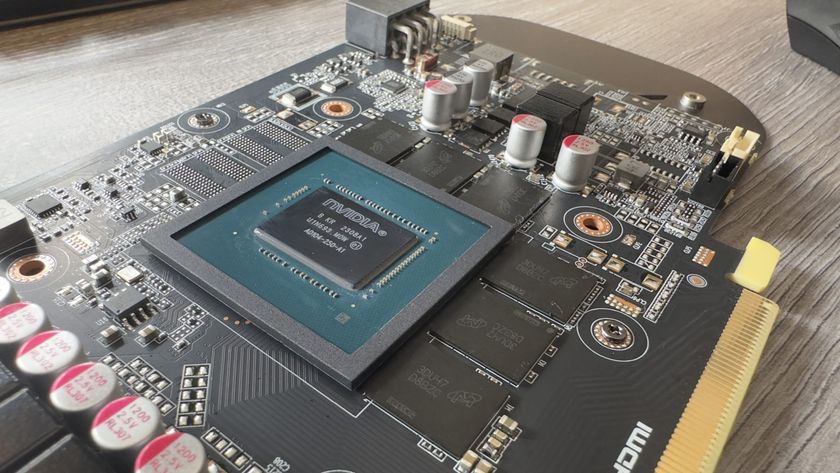
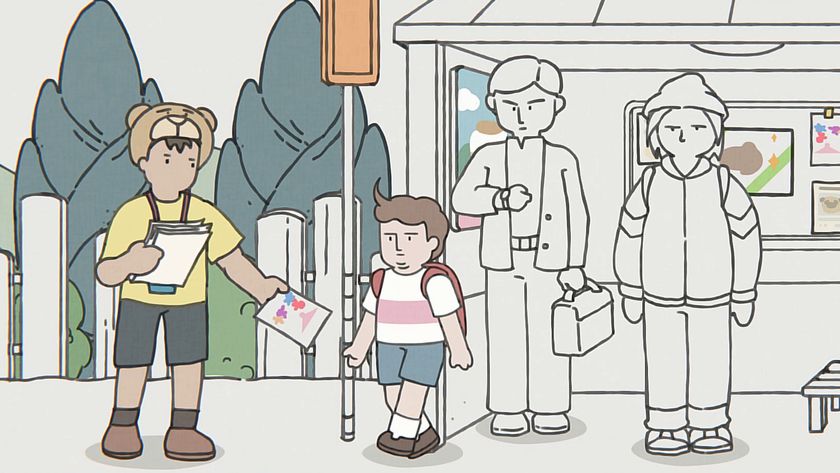

Seekers of Skyveil, the MOBA—extraction shooter mashup, is shutting down less than a month after release: ‘We have no choice but to bring this short journey to an end’

Riot walks back unpopular League of Legends changes: Hextech Chests are coming back, and the Blue Essence cost for new champions will be cut in half
